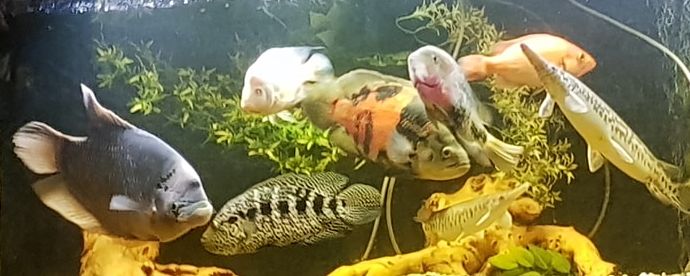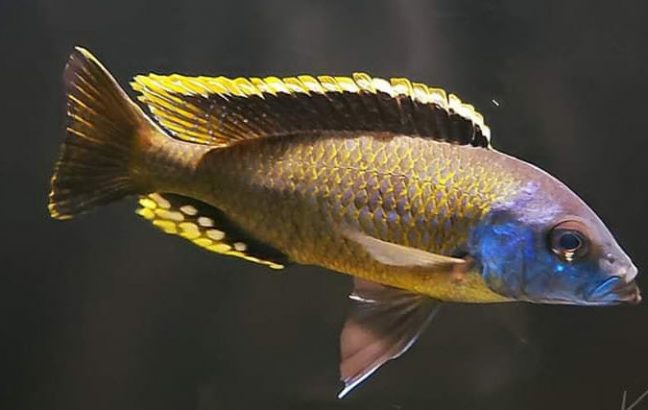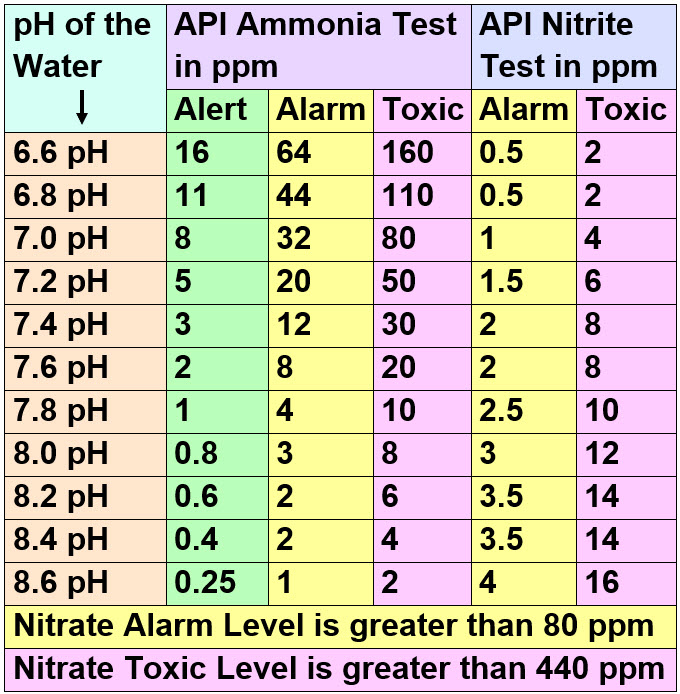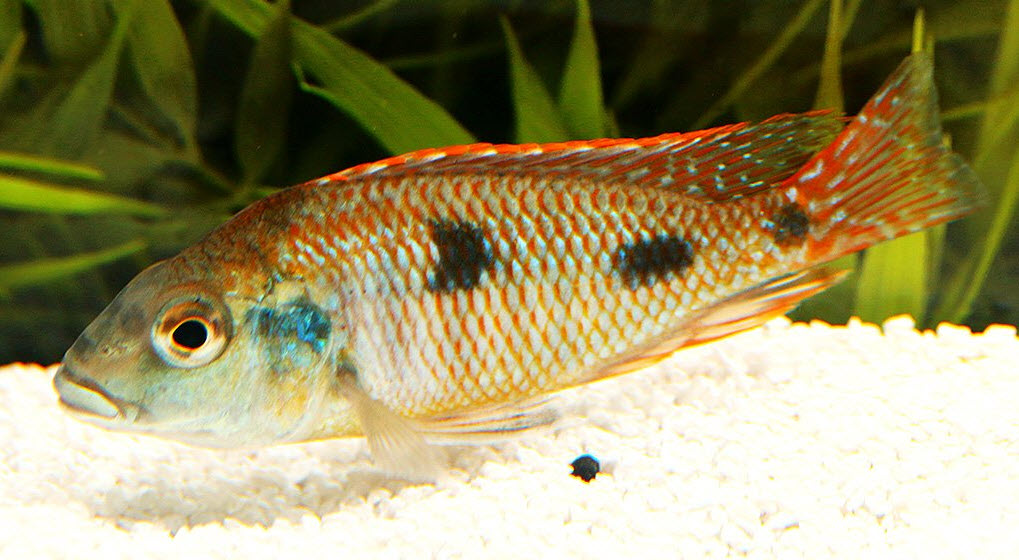
Understand, I recommend fish-less cycling for all aquarium hobbyists setting up a tank. This is simply the best way to cycle an aquarium with the least risk to the fish.
But contrary to many fervent people on social media, one does not HAVE to formally cycle a tank. If one only adds a few fish to an aquarium and feeds those fish lightly, the tank will cycle naturally and the fish will be just fine. When I suggest this on social media I’ve been told I’m “just wrong”, “barbaric” and “behind the times”.
One must realize how forgiving Mother Nature is. Mother Nature cycles 99.9% of all aquariums whether the hobbyist is doing a formal “cycling” or not. Only tanks which are thoroughly cleaned on a frequent schedule will avoid being cycled by Mother Nature.
When I started the hobby fifty years ago, I set up many aquariums before I knew there were such things as cycling, the nitrogen cycle, or beneficial bacteria. I only lost a few known “difficult” fish (neons). But I firmly believed in feeding very lightly and I always added only a few fish at a time. This probably explains my success. Of course, the folks on social media would say I was just “lucky”, ……. – …….about 15 times!

A “newbie” can set up a new aquarium and immediately add a few fish, feed lightly, and usually succeed just fine. This is why so many people give glowing testimonials as to how well a certain “bacteria in a bottle” works.
Testing shows bacteria-in-a-bottle simply doesn’t work:
2.8. Bacteria-in-a-bottle
The same holds for cycling a tank by adding chemicals like Prime or Amquel every day for a month. Newbies use these chemicals when adding moderate amounts of fish to a new aquarium and they are successful, so “obviously” these products worked! There is an old truth in science, “correlation is not causation”. Here is an analysis of these ineffective chemical “instant start” products:
2.9. Chemical “Instant Start” Products
.

Ammonia Toxicity
Mythbuster: There is a myth that if one adds moderate numbers of decent-sized fish to an aquarium that isn’t cycled, the fish will suffer or die a good percentage of the time. Ammonia toxicity is very dependent on pH. The most accurate way to illustrate the toxicity of ammonia (and nitrite and nitrate) is a chart derived from the University of Florida ammonia toxicity chart (Publication #FA16, “Ammonia in Aquatic Systems”, Ruth Francis-Floyd).
This chart translates the Seachem Alert dot test (top of the chart) of “ammonia gas” (NH3) to the API test (the body of the chart) of “total ammonia” (NH3 + NH4+) as to toxicity levels. The toxicity minimum (the level at which long term damage can begin to occur) for a short period (a few days or a few weeks) for ammonia, nitrite, and nitrate in the freshwater aquarium is as follows:

To use the chart, measure your pH. Find the pH in the left column. Read across as to the toxicity level with the API test. If one’s pH is 7.6 and one is concerned about ammonia, one should be “Alert” at 2 ppm and watch things One should be “Alarmed” at 8 ppm API ammonia and do water changes, and fish will start dying (“Toxic” level) at 20 ppm of the API ammonia test. To read the API test kit at those levels one must dilute the water by a factor of ten and then multiply the results by ten.
These numbers will shock most hobbyists, but they are accurate as confirmed by a host of university papers. Because of the low toxicity of these compounds, one can successfully add moderate numbers of decent-sized fish to an uncycled aquarium. There are some caveats:
- It must be a moderate number of fish.
- One can’t overfeed (greater than 1% of the fish’s body weight per day).
- The pH can’t be high as ammonia spikes are very poisonous at high pHs.
- The pH can’t be very low as nitrite becomes very toxic at low pH.

Adding fish immediately to an aquarium, with or without “bacteria in a bottle” or chemicals like Prime or Amquel, MAY RARELY result in long-term damage to the fish organs and immune system, leaving the fish more prone to disease and early death. But that caution must be tempered. This is what is known as a “risk factor” in fish death. It’s like a human having two beers and ten cigarettes per day. Immediate death is not inevitable. It is just “risky”, like climbing without ropes.
Return to Cycling Menu
.
Aquarium Science Website
The chapters shown below or on the right side in maroon lead to close to 400 articles on all aspects of keeping a freshwater aquarium. These articles have NO links to profit-making sites and are thus unbiased in their recommendations, unlike all the for-profit sites you will find with Google. Bookmark and browse!
.

Bob says
I’m 80 never added any chemical ot tested or changed water
Lots of plants and adequate light
My fish thrive. Old school every time!
Patrick says
Thank you Dave.
Your posts have given me a sense of zen about keeping an aquarium… I think my takeaway is to just let Mother Nature do her thing and only intervene when things are truly alarming. It was exhausting changing my water every day for two weeks, according to advice I had read before discovering your site.
As an aside, I did wonder how the beneficial bacteria were supposed to grow and establish themselves if I changed water so frequently and every time there was even a hint of ammonia or nitrite in the water.
Dave says
In reply to Patrick ….. First off mix fifty milliliters distilled water with five milliliters aquarium water. Run the test per the instructions with five milliliters of this mixture. Then multiply the result times ten. I.e. if the result measures 30 parts per million that is 300 parts per million actual.
Patrick says
> To read the API test kit at those levels one must dilute the water by a factor of ten and then multiply the results by ten.
The API ammonia test is 5 mL of aquarium water, 8 drops of bottle 1, and 8 drops of bottle 2. Does this mean to go with this chart, I should use 50 mL of water, 8 drops of bottles 1 and 2?
Stefano says
You are correct; I have ‘not cycled’ a 60L planted aquarium with 4 adult guppies (1 male and 3 females), 2 apple snails, 4 Neocaridina shrimp, and 4 Caridina shrimp. It has been about 30 days without any fish loss (although, unfortunately, they have also produced about 30/40 fry 😕). The only filter I am using is a double sponge filter with ceramic ball media. ( this: https://www.amazon.it/gp/product/B07RFKNF3G)
Dave says
In reply to Daniel …. Yes, the aquariums were new but the filters were not new. When you “cycle an aquarium” you actually “cycle a filter”. So you were able to move the full load of fish over with no problems.
Daniel Carlton says
See. I am confused. My son bought me a 75 gallon aquarium for my birthday. I set it up. I had mbuna in a 55 gallon and in a 53 gallon aquarium. I took the mbuna from both tanks and placed them in the new tank. I am puzzled as to how all those fish added at the same time in a new tank survived. I mean that is 38 mbuna and 1 pleco and none of them died and are thriving. I did use Seachem safe and Stability at start up to which reading your literature I have found is garbage lol. Only thing I can figure is it’s my filters. I used the filters that were on my 53 gallon. I have 2 tidal 110 hob filters, a pennplax cascade 1500 canister, an Aquael ultramax 2000 canister and 2 wave makers. I have sponges in all the filters at the time of transfer and the 53 gallon was up and running 7 months prior to the 75 gallon upgrade. Since reading all this I have removed all the biohome out of my canister filters, all polyfil out of the canister filters, and replaced it with more sponge and k1 media. I also have always put pre-filter sponges from Cory at aquarium co-op on all my canister intakes and my hob intakes. Wow. I have learned so much from you and yet am kicking myself for all the waisted money I have spent. I am truly grateful sir.